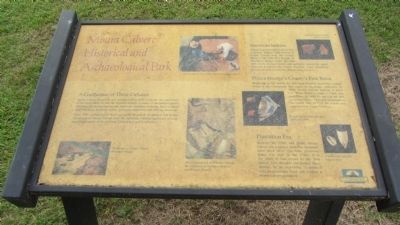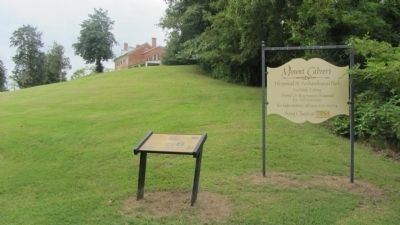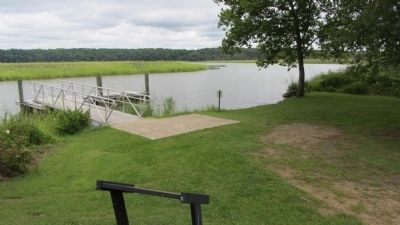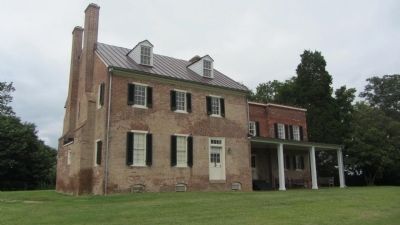Croom in Prince George's County, Maryland — The American Northeast (Mid-Atlantic)
Mount Calvert Historical and Archaeological Park
Inscription.
A Confluence of Three Cultures
Mount Calvert Historical and Archaeological Park overlooks the confluence of the Patuxent River and the Western Branch. A series of interpretive panels, describes the archaeological and historical resources from the three cultures that lived here: American Indian, European-American, and African-American.
Since 1996, archaeologists have recovered thousands of artifacts left by the inhabitants of Mount Calvert over the centuries. Archaeologists are piecing together glimpses of life at Mount Calvert that span 8,000 years.
American Indians
Archaeological evidence shows that American Indians were present at Mount Calvert from the Archaic Period (7500-1000 BC) through the Woodland Period (1000 BC-1600 AD). Early Archaic hunters and gatherers visited the upper Patuxent to harvest the river's resources. Later, Woodland farmers lived in permanent villages along the river.
Prince George's County's First Town
Beginning in the 1680s, the Maryland General Assembly created towns in the Chesapeake Bay region to encourage settlement. In 1684, Mount Calvert became a town site. When Prince George's County was established in 1696 Mount Calvert was re-named Charles Town and designated as the county seat. In 1721 the county seat was moved to Upper Marlboro.
Plantation Era
Between the 1780s and 1860s, Mount Calvert was a tobacco plantation dependent upon slave labor. The brick plantation house was built in the 1780s. Over the years, it was owned by the John Brown, John Brookes and Samuel Berry families. By the mid-1800s, 51 enslaved African-Americans lived and worked at Mount Calvert plantation.
Topics. This historical marker is listed in these topic lists: African Americans • Colonial Era • Native Americans • Settlements & Settlers. A significant historical year for this entry is 1996.
Location. 38° 47.109′ N, 76° 42.82′ W. Marker is in Croom, Maryland, in Prince George's County. Marker can be reached from Mount Calvert Road, 0.4 miles east of McClure Road. Marker is in the Mount Calvert Historical and Archaeological Park, at the pier, about 500 feet from the parking area. Touch for map. Marker is in this post office area: Upper Marlboro MD 20772, United States of America. Touch for directions.
Other nearby markers. At least 8 other markers are within walking distance of this marker. Mount Calvert Federal Period Plantation House (about 300 feet away, measured in a direct line); Billingsley's Point (about 300 feet away); Explosive Scene (about 500 feet away); The War of 1812 and the Chesapeake Flotilla (about 500 feet away); African-Americans at Mount Calvert (about 500 feet away); Chesapeake Beach Railway
(about 500 feet away); Mount Calvert Manor (about 500 feet away); Mount Calvert, Early Town (approx. 0.2 miles away). Touch for a list and map of all markers in Croom.
Credits. This page was last revised on June 16, 2016. It was originally submitted on September 1, 2013, by F. Robby of Baltimore, Maryland. This page has been viewed 588 times since then and 11 times this year. Photos: 1, 2, 3, 4. submitted on September 1, 2013, by F. Robby of Baltimore, Maryland.



